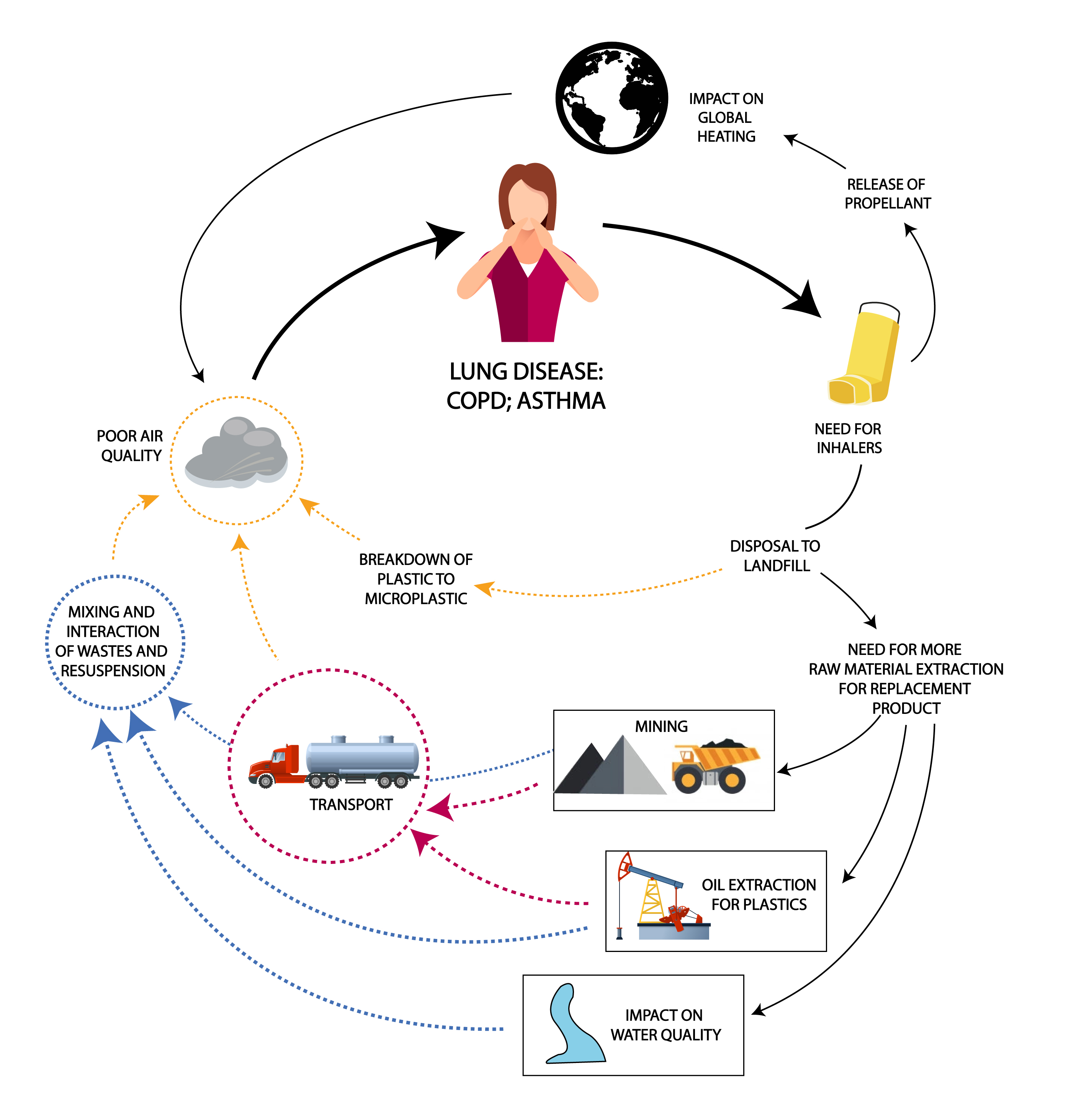Natural cycles underpin the very stuff of life. In this commentary we consider unnatural cycles: that is, anthropogenic activities which have a circularity, but whose nature is to have a detrimental effect on human health, exacerbating existing problems. Natural cycles have feedback loops, some of which have recently come to light, with an understanding that everything is connected in some way. In health, feedback loops are imperative in homeostatic mechanisms. However, in the unnatural cycle the feedback loops serve to reinforce (and in some cases amplify) negative problems. We offer a commentary on an unnatural cycle moving from air quality to lung function and back to air quality; we call this the lung disease unnatural cycle. We suggest where links occur, and where wider consideration of interactions between various disciplines can lead to breaking this unnatural (or vicious) cycle, changing it to a healthy cycle where individual health can be improved, along with better global scale outcomes. We suggest that many activities within this unnatural cycle occur within silos. However, the improved cycle incorporates joint activities at geological, health, and financial levels, to the mutual benefit of all, breaking the unnatural cycle, and improving health, life and financial costs.

